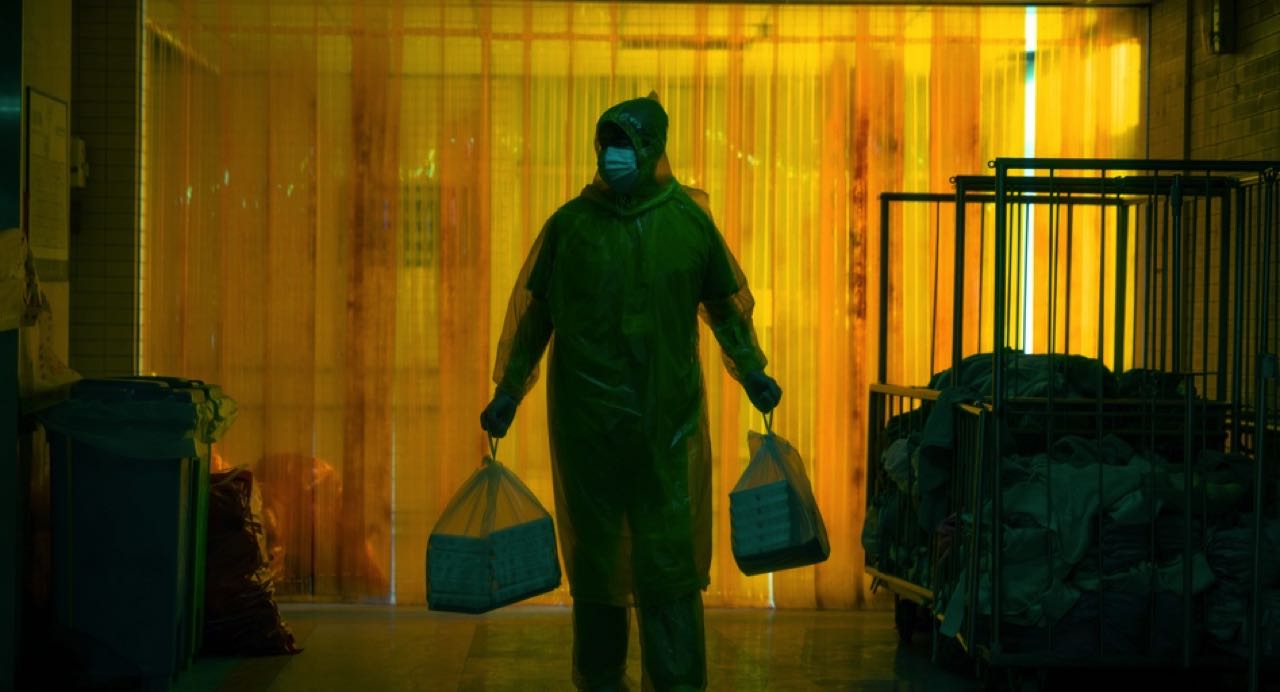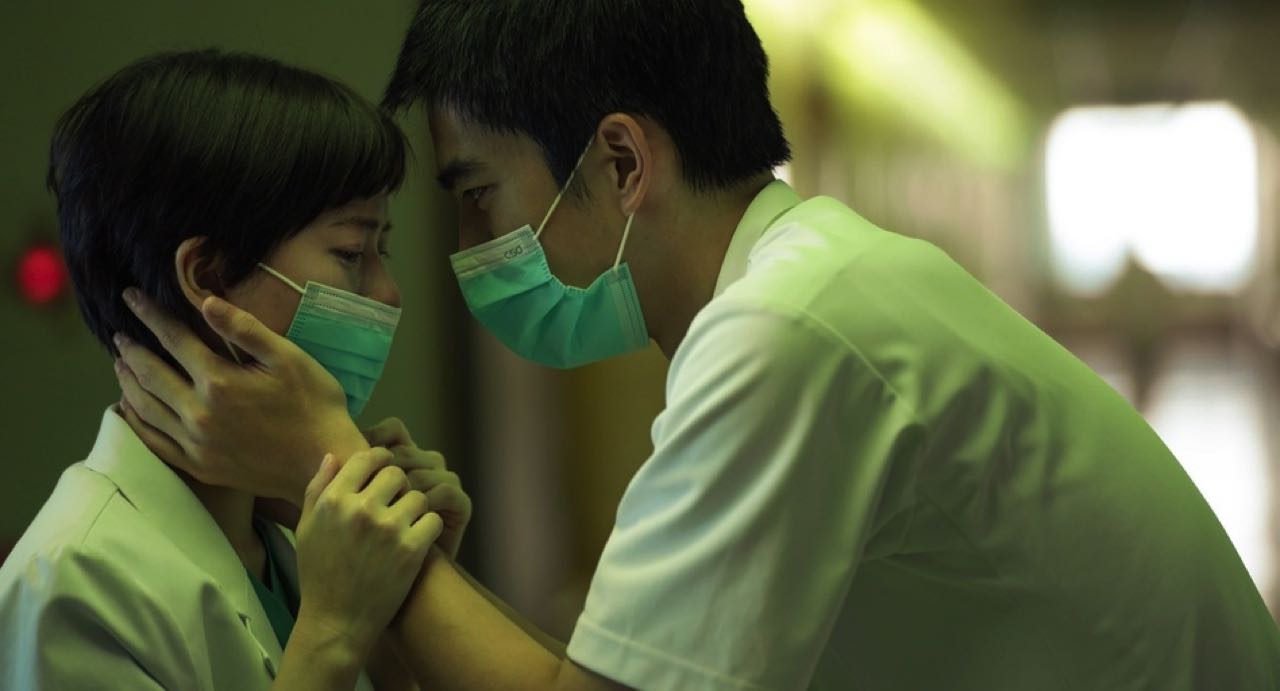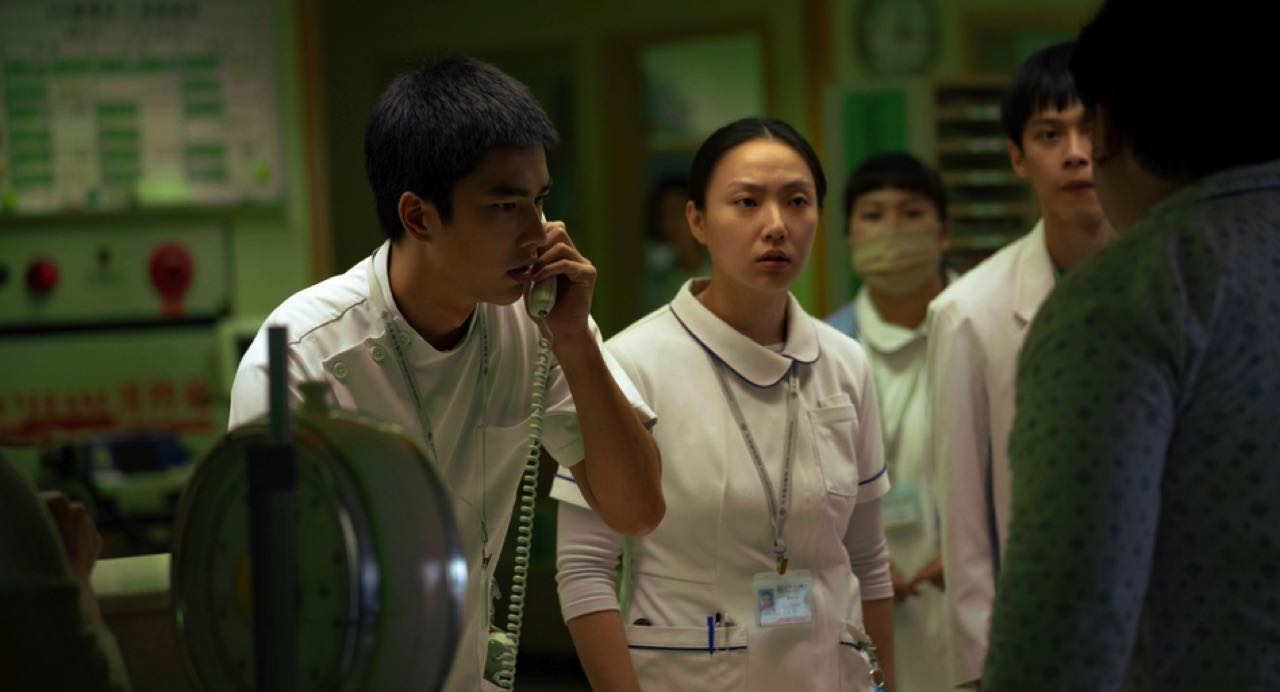by Brian Hioe
語言:
English
Photo courtesy of Filmagic Pictures Co.
This is a No Man is an Island film review written in collaboration with Cinema Escapist as part of coverage of the 2023 New York Asian Film Festival. Keep an eye out for more!
EYE OF THE STORM is a powerful, but melodramatic fictionalization of the lockdown of Heping Hospital during Taiwan’s 2003 SARS crisis.
The lockdown of the Heping Hospital was a real-world event, involving over 1,000 patients, doctors, nurses, and hospital staff being locked into the hospital for around two weeks by the Taipei city government. This took place after SARS cases were found at the hospital, during a time in which it was unclear how the infection spread.
During the course of the lockdown, one patient killed himself, and between 24 and 35 died of SARS–including doctors and nurses. During the two weeks, some nurses and doctors demonstrated, barricading themselves away from the rest of the hospital and refusing to treat patients.

Photo courtesy of Filmagic Pictures Co.
The Taipei city government was later criticized for confining other residents of the hospital together with SARS patients even if this meant that they were all the more likely to catch the virus. The Heping Hospital lockdown proved a traumatic moment for Taiwanese society, with later responses to COVID-19 aiming to avoid similar forcible lockdowns.
Eye of the Storm follows a cast of several characters. The first is Doctor Hsia, a successful surgeon at the hospital who is originally on his way home to his daughter’s birthday party when the lockdown occurs. Hsia is depicted as a harried family man but, at the start of the film, he is shown as caught between work and family. On the one hand, he views his work as a doctor saving lives with importance, on the other hand, he hopes to spend more time with his family. When the hospital is locked down, Hsia initially tries to hide himself away to avoid infection, while also exchanging information with a journalist friend in the hospital, You-chung.
By contrast, Tai-he, a nurse at the hospital, is a much more self-sacrificing character. Tai-he is contemplating a shift in his career to work with Doctors Without Borders at the start of the film, even if that will take him away from his girlfriend, Hsin-yan, a physician at the hospital. At the start of the lockdown, Hsia and Tai-he argue over the latter’s reluctance to contribute more than he has to.

Photo courtesy of Filmagic Pictures Co.
As the film goes on, Hsia gradually finds himself changed by the experiences of being in the hospital. In many ways, the movie follows the traditional hero’s journey with regard to its protagonist. Likewise, the movie features a number of secondary protagonists, such as a taxi driver that ends up trapped in the hospital, and a lone girl seeking her mother.
To a large extent, Eye of the Storm can be regarded as a post-COVID imagination of the 2003 SARS outbreak. As such, the framing of its events mirrors how COVID played out in Taiwan. Among the film’s most effective scenes is the depiction of familiar tropes of pandemic life—like medical garb, medical masks, and constant temperature testing— as they gradually appear in the course of the outbreak.
Eye of the Storm does show members of the medical profession as, for the most part, heroic. But the film derives more of its drama rom showing the humanity of its cast under duress. This makes it a far cry from fare such as Hong Kong’s propagandistic All U Need is Love–a film that depicts harsh lockdowns in Hong Kong that nonetheless resulted in the world’s highest death rate of COVID-19—in a positive, insipidly comedic light. Eye of the Storm is not exactly one for subtlety, particularly during tense scenes involving surgery. Still, as an imagination of a major Taiwanese historic moment, whose historical memory impacted the later response to COVID-19, the movie is still gripping.



